
Bathroom
Bathroom Mirror Trends to Inspire Your Ideas
01.07.2026
Our New Year savings event is here: Get up to $6,500 off your project today (terms apply).

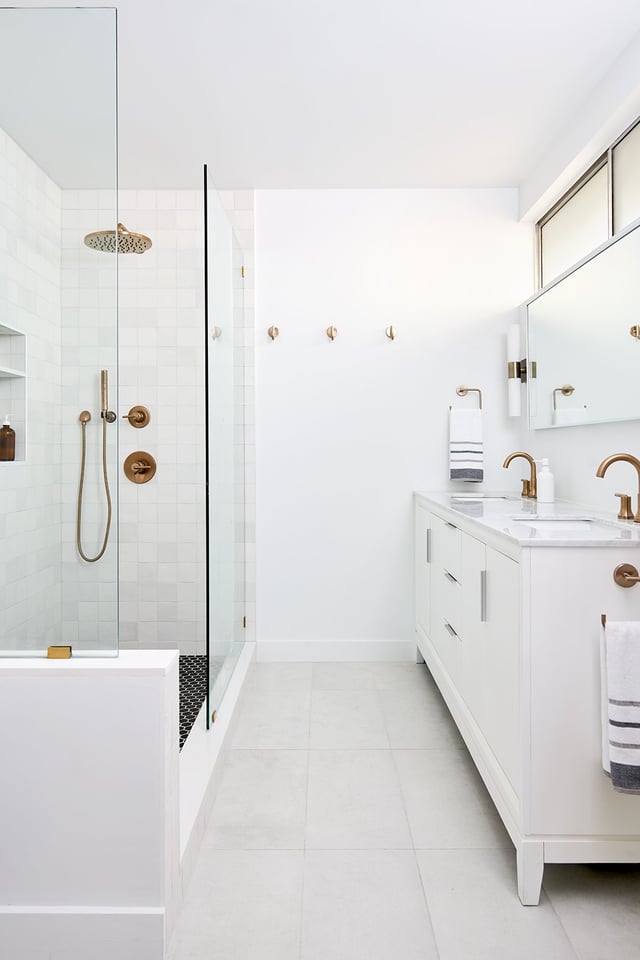
In This Article
Are you struggling with how to make the most of your small bathroom layout? As a homeowner, designing a functional and aesthetically pleasing space with a limited floor plan is hard enough— it becomes even harder when you think about incorporating storage, a shower or bath, and a sink in a tight space (especially if you have to share the bathroom with a partner or housemate). If you're feeling overwhelmed by the constraints of your small space, don't worry – there are creative solutions for making the most with what you have.
Take, for example, Casey and Sam— who had been looking to renovate their apartment’s bathroom ever since they moved in. It wasn’t just that it was “an eyesore”— featuring a dated pink sink and butterfly patterned tile— but that it had a uniquely frustrating layout that made it hard to use. “The shower was super small. I'm not even that tall, like 6 foot,” Casey says, “but I had to bend down to get my hair wet. Anytime I would try to turn while showering, I'd bump my elbow into things, and knock the shower door open.”
They worked with Block and a vetted contractor to transform their space, and their project helps illustrate some of the key ways you can design around a small bathroom.
The proportions of Casey & Sam’s space were all off— meaning that “everything was kind of in the same spot, but the wrong things were taking up the wrong amount of space,” Sam tells us. “So our countertops and sinks were huge and our shower was smaller and you couldn't open the shower door and get in if one of us was trying to stand there and brush their teeth.” The first thing they did with Block was overhaul the proportions of the elements that composed the space, while keeping the basic layout the same. They got themselves a more manageable vanity, made their shower larger, and added in a rainfall showerhead with a partial glass enclosure to make it easier to move around in their space.
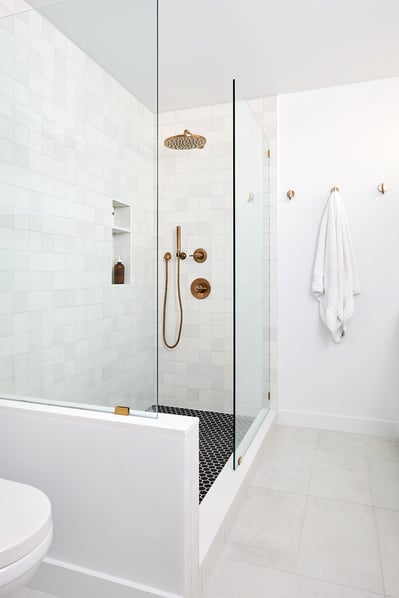
The partial glass enclosure was key in maximizing the usability of the space, making it “so much easier to get around,” as Sam tells us, since they didn’t have to worry about swinging shower doors. The design ensured that both of them could use the space to get ready in the morning without constantly bumping into each other. When considering space optimizations, be aware of choke-points and bottlenecks created by opening doors affixed to showers, vanities, cabinets, etc.
If you have a small bathroom with a door that swings open, for example, consider replacing it with a sliding door. Sliding doors take up less space and can help to make the room feel more open and spacious. This is particularly useful if you have a shower or bath, as the door will not take up space when it is open. You can also consider installing a pocket door, which slides into a pocket in the wall and takes up even less space than a traditional sliding door.
To make the most of your small bathroom layout, utilize the wall space by installing shelves or cabinetry. This will give you additional storage options and free up floor space. When it’s a small shared bathroom, maximizing storage while minimizing the impact of clutter on your space is particularly important.
Getting a nice, clean vanity with storage (either standing or floating, depending on your preference) goes a long way for a small space, letting you store everything you need to minimize clutter. Though pedestal vanities might be great for really small bathrooms, make sure you have a place to store things like cleaning supplies so things don’t get too cramped. Bonus points if it’s easy-to-clean. Replacing Sam & Casey’s tiled counters with a sleek new vanity meant that cleaning would be a breeze, and that storage would never be a concern.
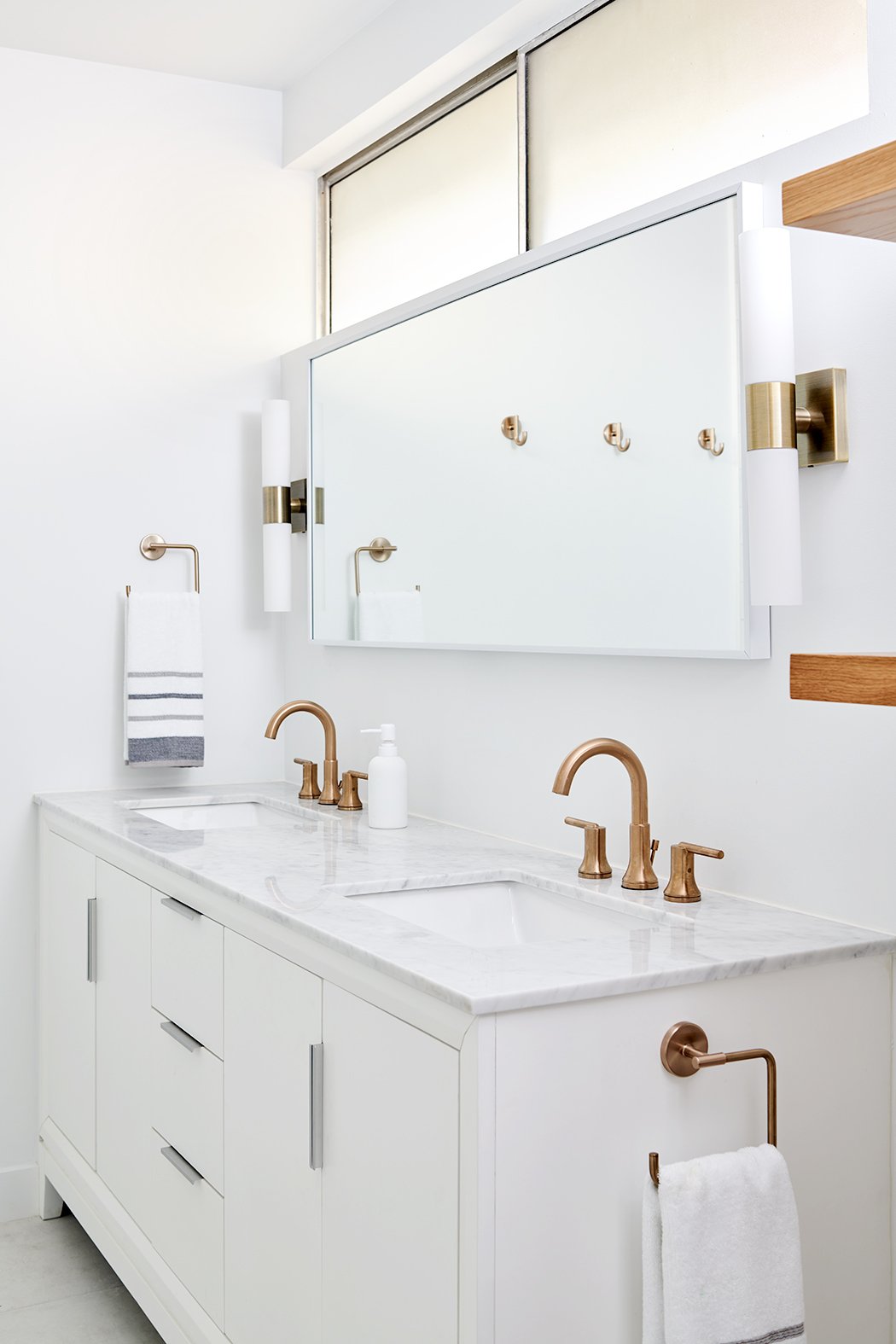
Light colors can make a small bathroom feel larger and more open. Paint the walls and choose light-colored fixtures and finishes to brighten up the space like Casey and Sam did.

Written by Block Renovation
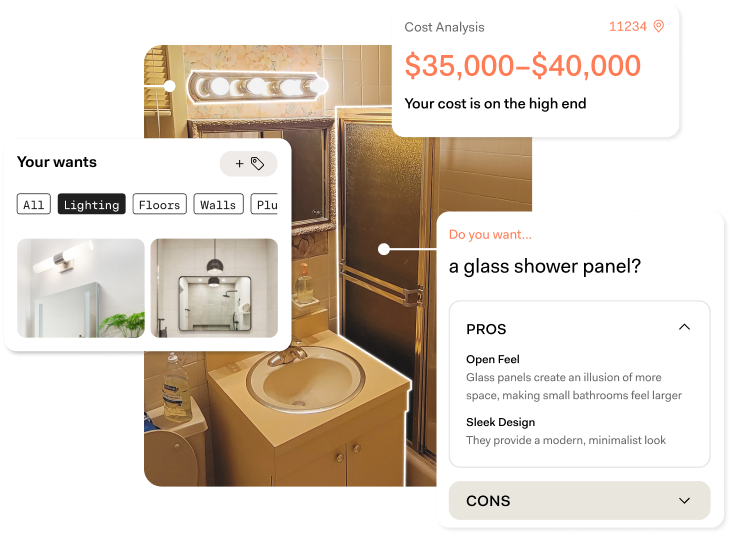
Calculate the true cost of your bathroom remodel
Get real-time cost estimates for materials and labor, so you can budget your renovation with confidence—no guesswork.
Thousands of homeowners have renovated with Block

4.5 Stars (100+)

4.7 Stars (100+)

4.5 Stars (75+)

Bathroom
Bathroom Mirror Trends to Inspire Your Ideas
01.07.2026

Design
Color Drenching: How to Do It Right
01.06.2026

Bathroom
Eco-Friendly Shower & Bathroom Ideas
12.23.2025

Design
Converting a Closet Into a Mudroom - Here's What to Know
12.21.2025
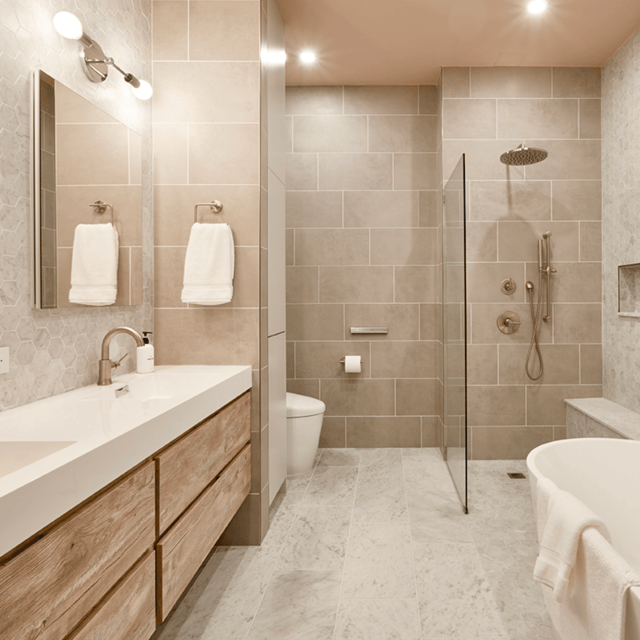
Bathroom
New York City Bathroom Remodels: Planning & Renovation Tips
12.05.2025
Renovate confidently